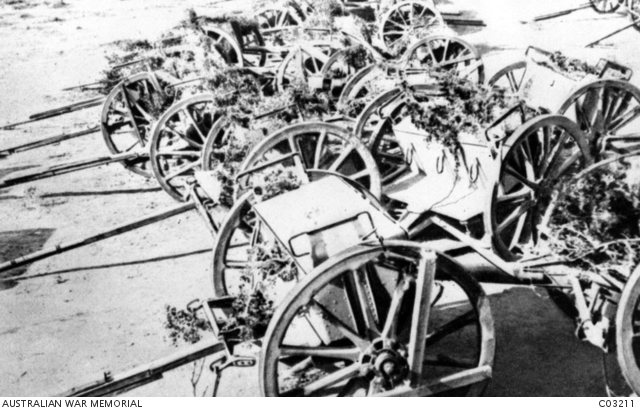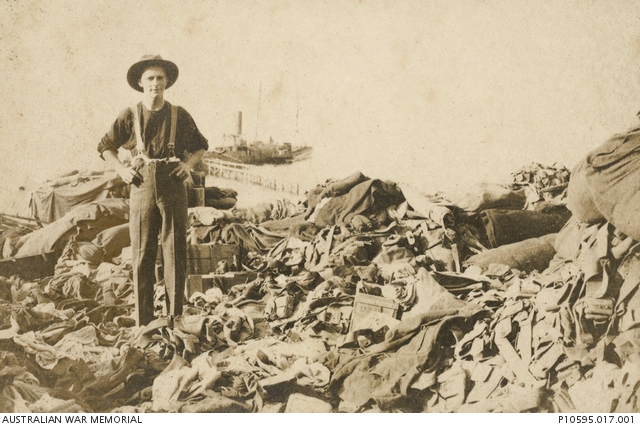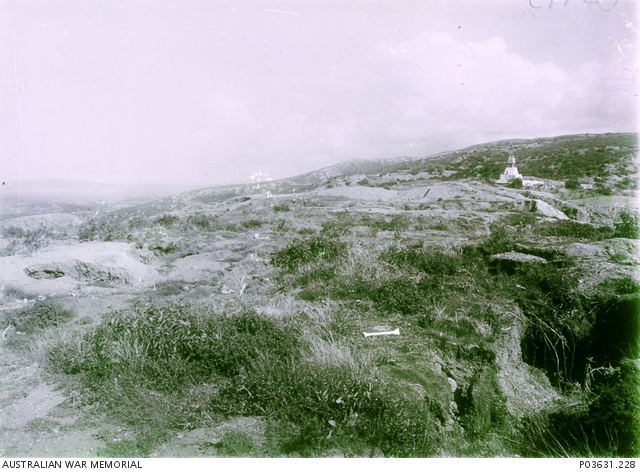‘A century since we stole quietly away’, Honest History, 23 December 2015
To judge from Trove (the National Library’s newspaper database) the first news of the successful evacuation from Gallipoli arrived in time for the evening editions of Australian papers on 21 December 1915. The Sydney Evening News for that date carried under banner headlines an article datelined ‘London, Monday evening’, that is, the evening of 20 December GMT.
The War Office made an important announcement this afternoon [the article began]. This is that all the troops at Suvla and Anzac, on the Gallipoli Peninsula, together with guns and stores, have been transferred to “to another sphere of operations”. The casualties sustained during the transfer are said to have been insignificant.
The Scone Advocate came out late enough on 21 December for its ‘War Notes’ to include a judgement call. ‘It [the evacuation] must have been a wonderful piece or work, and will, we venture to say, be regarded as the finest achievement in the whole of the war.’ Many people say similar things today.
 Abandoned ordnance, Gallipoli, December 1915 (AWM C03211/Ottoman photograph)
Abandoned ordnance, Gallipoli, December 1915 (AWM C03211/Ottoman photograph)
By 22 December, the news was ‘all over the papers’ and by Christmas even smaller regional weeklies had caught up. The retreat from Gallipoli remained big news till the end of the year and beyond, with many papers running detailed analyses of what had contributed to the outcome, along with reports from the London newspapers which praised the efforts of Australians during the campaign. The Westminster Gazette said ‘brave men have not died at Gallipoli in vain’. Not dying in vain has always been a favoured war aim – after the event.
Prime Minister Hughes marked the spot; his words have been echoed by countless official spokespersons since:
The evacuation of Anzac and Suvla Bay serves but as a spur to our resolute purpose. These names run like fire through the veins of every Australian, kindling the spirit of his patriotism. Our soldiers have left Anzac, but their glory will for ever remain on the soil soaked with their heroic blood. Australia turns a serenely resolute face towards the enemy, assured that her brave soldiers will on other fields uphold the reputation won on Gallipoli that has made us all proud to be akin to them. I desire to express my great joy at the safe withdrawal of our troops, and to congratulate those to whose skill and care it was due.
On Sunday, 20 December 2015, the Australian War Memorial marked the centenary of the evacuation with an augmented version of its daily Last Post ceremony. This ceremony is something the Memorial does quite well (as Sarah Brasch reported earlier this year) although within constraints that ensure the patriotic and affirming purposes of the ceremony prevail over remembrance of individuals. A desire for standardisation pervades the ceremony, just as it did the arrangements for the tombstones and epitaphs of World War I – common dimensions, 66 character limit for epitaphs, heavy hints about appropriate wording.
Still and all, on 20 December around 300 people were present for the Last Post ceremony, good numbers considering the heat and the gusty wind. In the Roll of Honour cloisters, the breeze had blown poppies from their niches next to the names of the dead, among whom was Sergeant Harry Laughlan Bowser of Marrickville, New South Wales, and the 2nd Light Horse, died of wounds, 19 December 1915, commemorated on this hot December day a century later in the presence of his family members, visitors and assorted dignitaries.
Wreaths were to be laid by Stuart Robert MP, Minister for Veterans’ Affairs, Human Services and Assisting the Prime Minister for the Centenary of Anzac (more of that below), by Rear Admiral Ken Doolan (Ret’d), National President of the RSL and former Chair of the War Memorial Council, Lieutenant General Angus Campbell, Chief of Army, and various diplomatic and military representatives of France, Germany, India, New Zealand, Pakistan, and South Africa. By far the most moving segment, however, was the laying of three wreaths by representatives of the Bowser family, old and young, as a lone piper rendered The Flowers of the Forest.
 Supply dump about to be burnt, Gallipoli, 18 December 1915 (AWM P10595.017.001/SA Tooth)
Supply dump about to be burnt, Gallipoli, 18 December 1915 (AWM P10595.017.001/SA Tooth)
Just for a moment, with those three wreaths, the individual and family meaning of death in war emerged from beneath ‘standard form’, bureaucratised commemoration. Anzac remains, according to Minister Robert in his speech, ‘an indelible source of national pride and expression of national character for both our nations‘ (emphasis added). For many bereaved families, now and a century ago, that official and corporate version must seem far-removed from what they feel. Isn’t it possible for families to commemorate loved ones without having to swallow the myth whole? Why cannot politicians spruik their preferred Anzac legend without lumbering all of us – the whole nation – with it?
The ‘freedom’ Sergeant Bowser and others allegedly fought for surely includes the freedom to opt out of Anzac in the Hughes-Robert sense, Anzac as something which kindles our patriotism and expresses our national character. A respectful posture towards war dead does not need to be wrapped in a flag.
The eulogy for Sergeant Bowser, read by a female naval officer, was boilerplate, reflecting the Memorial’s constraints mentioned above, as was the remainder of the Minister’s speech, though he read it well and resonantly. He included a reference to Ottoman soldiers who ‘bravely died defending their homeland’ and ended with the words ‘the Gallipoli campaign was done’. All this was predictable. When it came time to lay the wreaths there was a surprise, however. While other wreath-laying responsibilities were discharged as expected and by the official whose name had been announced, the wreath of the Minister for Veterans’ Affairs and Minister Assisting the Prime Minister for the Centenary of Anzac, a minister of the Crown, representing the Australian Government, was laid by the Minister’s son, perhaps six years old, unannounced, as the Minister stood alongside. Opinions will differ as to the appropriateness of this element of the ceremony.
The Ode and Lest We Forget followed the speeches. The Last Post bugler, in Salvation Army uniform, survived his turn in the hot sun and brought the proceedings towards a close. Visitors began to drift away, a few stopping to inspect the wreaths. In the Pool of Reflection a single wind-blown poppy floated. As the crowd dispersed through the gardens towards the carpark, some visitors prevailed upon the departing German officer to pose for a photograph with one of their group.
The Last Post ceremonies lack the pomp and ceremony of larger events at the Memorial (the Dawn Service and National Service) but they avoid the fun park stuff (Discovery Zone, ‘Mephisto – rarest tank in the world‘). They could be improved in three ways, however, first, by an admission (through gritted teeth, if necessary) that the Gallipoli evacuation marked the end, not of a ‘campaign’, as Minister Robert put it, but of an unsuccessful invasion and, secondly, by widening the scope of the ceremonies to recognise not only the dead but also the much larger numbers who were injured physically or mentally in our wars but whose names do not appear on the Roll of Honour. (There are plenty of World War I examples in Scates et al, World War One: A History in 100 Stories.)
 Turkish monument, The Nek, 1919 (AWM P03631.228/GH Wilkins)
Turkish monument, The Nek, 1919 (AWM P03631.228/GH Wilkins)
A third improvement would come from expanding the Memorial’s repertoire of Charles Bean quotes beyond ‘Here is their spirit’ and the imaginary dying digger at Gallipoli or Pozieres (‘they will be proud of this’). Ross Coulthart’s book on Bean, recent joint winner of the Prime Minister’s History Prize, gives us a many-sided Bean, as do Bean’s diaries, on which Coulthart and others like Peter Rees have drawn. ‘It’s the contradictions in Bean that make him interesting’, Mark Dapin said in his review of Coulthart. The Memorial could do us all a service if it used some more of Bean’s words to present a nuanced picture of war as he saw it. This would also help the Memorial to broaden its own perspective.

